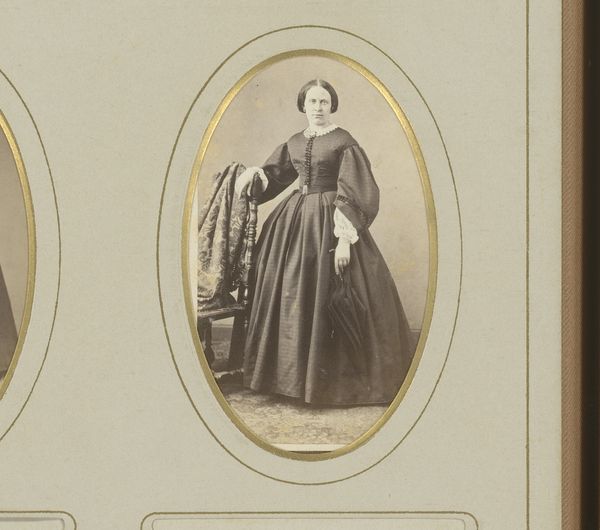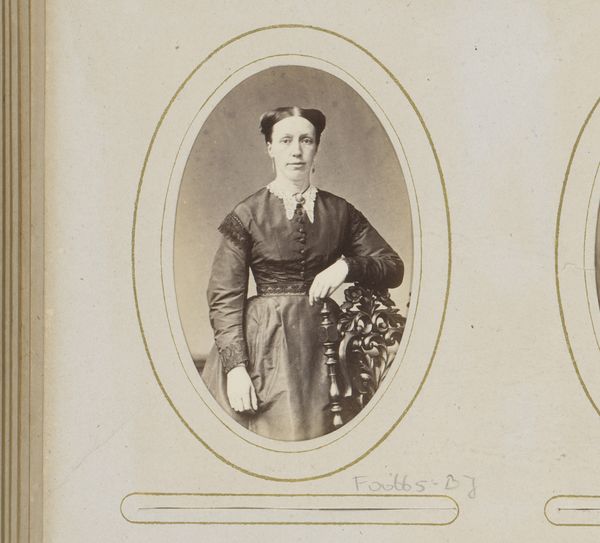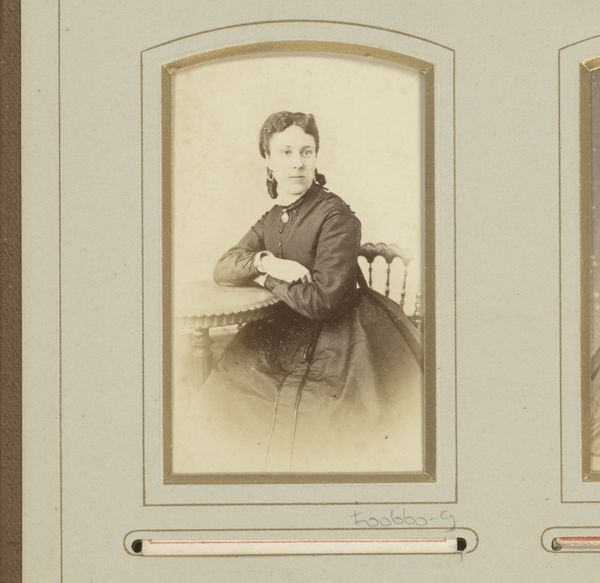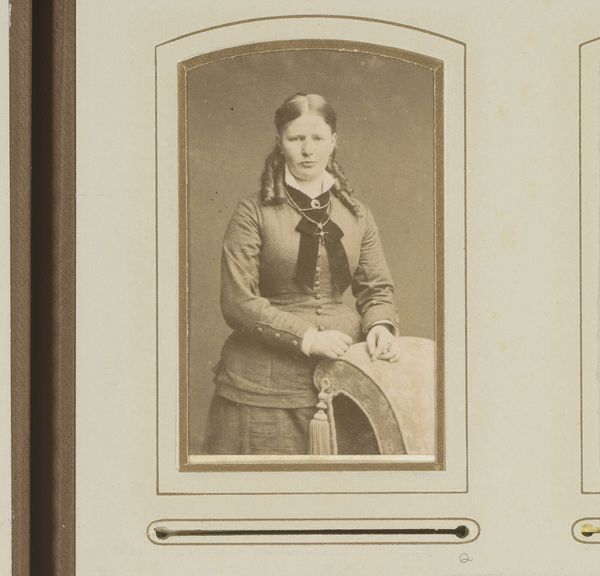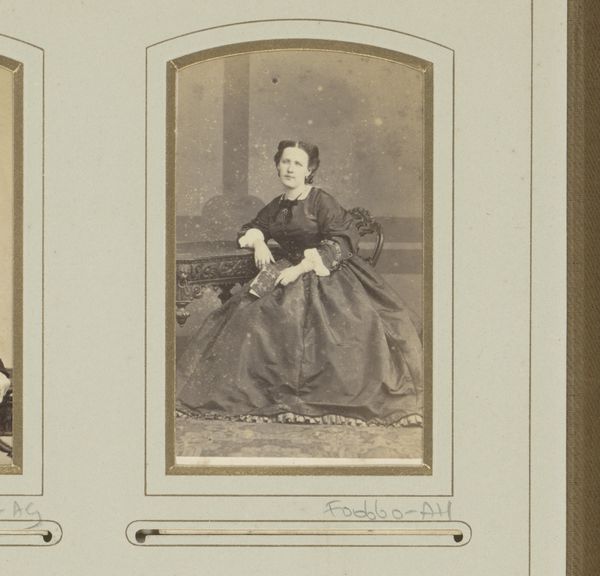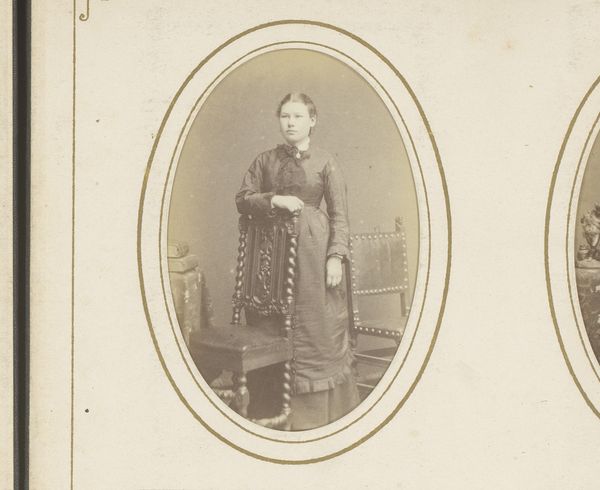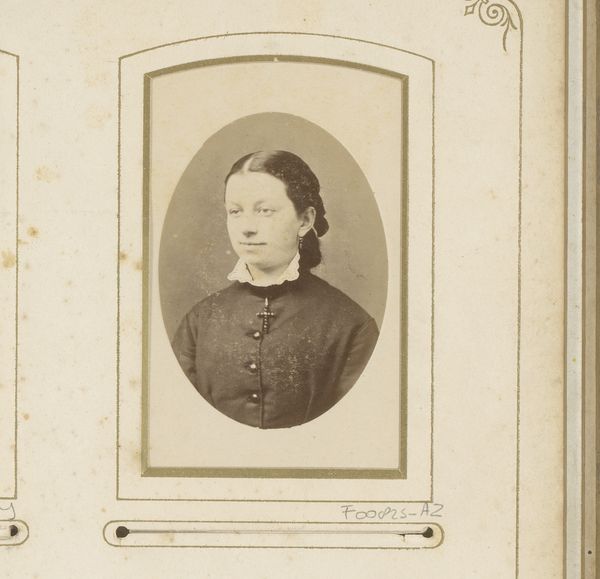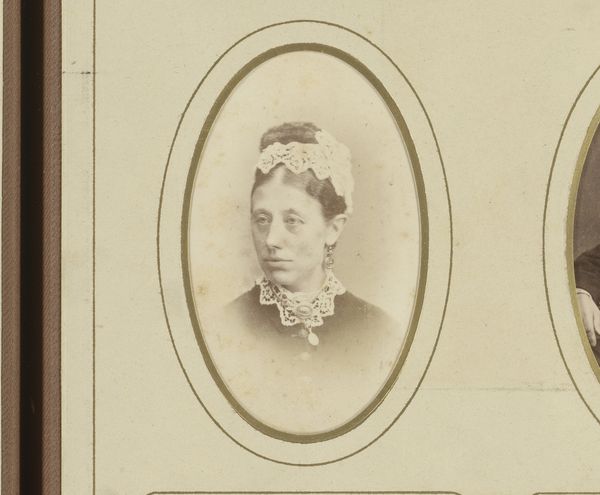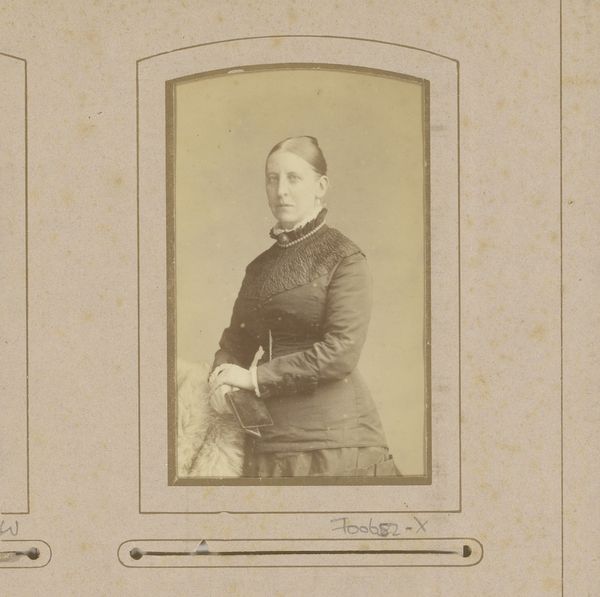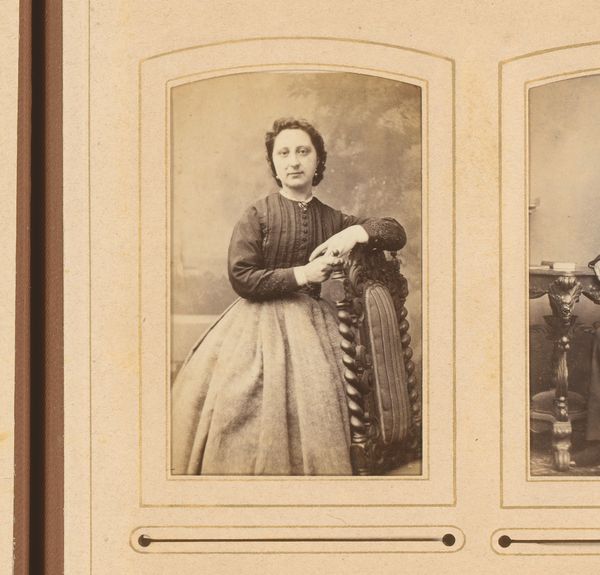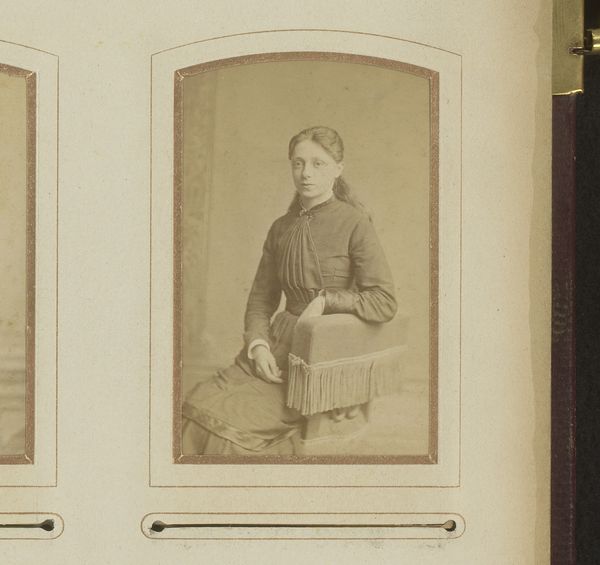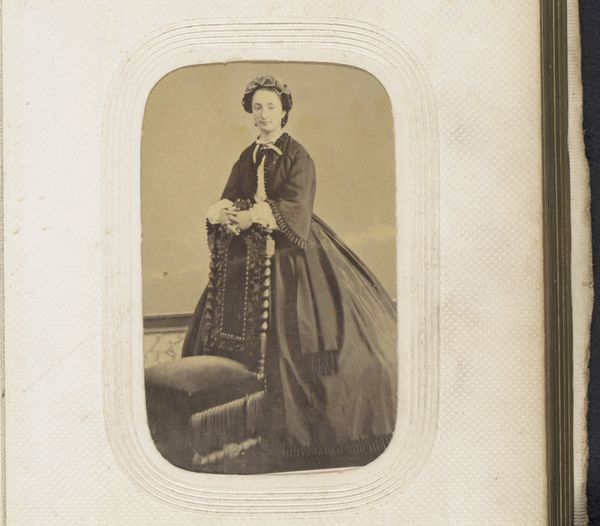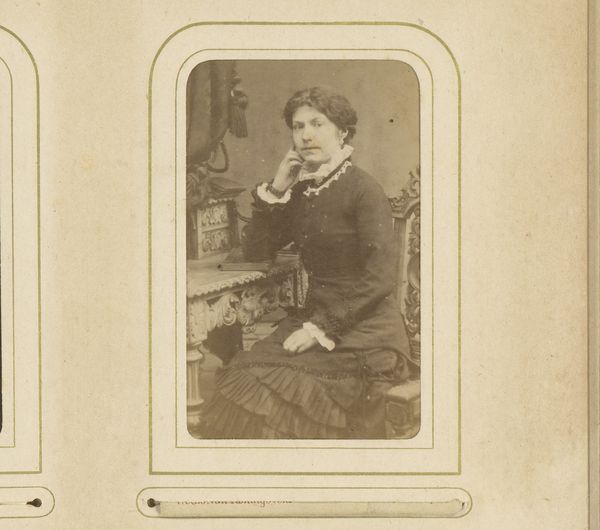
Portret van een vrouw met oorbellen, staand bij een stoel 1867 - 1888
0:00
0:00
photography, gelatin-silver-print
#
photography
#
historical photography
#
gelatin-silver-print
#
19th century
Dimensions: height 86 mm, width 54 mm
Copyright: Rijks Museum: Open Domain
Curator: This gelatin-silver print, titled "Portrait of a Woman with Earrings, Standing by a Chair," was captured sometime between 1867 and 1888 by Johannes Wilhelmus Franciscus Offenberg. There is an element of starkness here, wouldn’t you agree? Editor: Absolutely. It's striking how unadorned it feels, especially considering the presumed social status suggested by her dress. The lighting highlights every contour, creating this incredibly direct gaze. Curator: Exactly. The texture is quite rich when you consider the gelatin-silver process; the almost clinical detail offered by the photograph really reinforces the sense of materiality. The buttoned dress looks meticulously crafted—what statement about class is embedded within that design and construction? Editor: We have to contextualize that materiality within its era. What did access to fashion, this style of dress, even photographic portraiture mean for women in the latter half of the 19th century? This wasn't about simple vanity, was it? This was about representation, and negotiating a social role. Curator: I see your point. It underscores the consumption and display inherent in 19th-century bourgeois life, how it defined identity through objects like dresses and photographs. The question of agency surfaces; did she have control over this carefully manufactured self-image? Editor: Precisely. And thinking of the artist’s labour, Offenberg, the question becomes, how aware was he of contributing to a larger performance of power? How complicit was he, or how critically aware was he about photography as an instrument of social identity at the time? Curator: Interesting perspective! We are considering the photographer as labor, just like the garment production she is wearing; labor creating representation, the layers become palpable. I'm now wondering about the photographic paper. The surface has degraded which gives a speckled appearance—an element time has added, perhaps disrupting the crisp effect Offenberg desired. Editor: And it almost provides her some dignity too, that softening through time. A reminder of the human condition, of temporality; history layered upon her very image. Curator: What a resonant encounter—it leaves one contemplative of social narratives intertwined within a seemingly still frame. Editor: Indeed. These lasting conversations about individual agency and historical process feel really crucial in the present day.
Comments
No comments
Be the first to comment and join the conversation on the ultimate creative platform.
